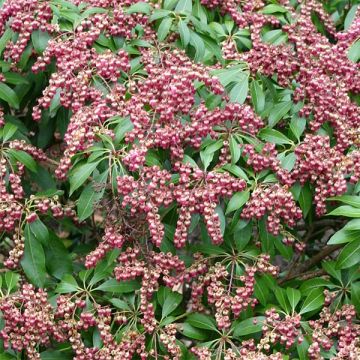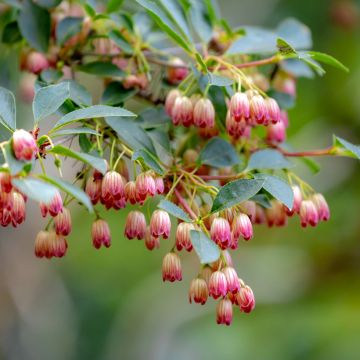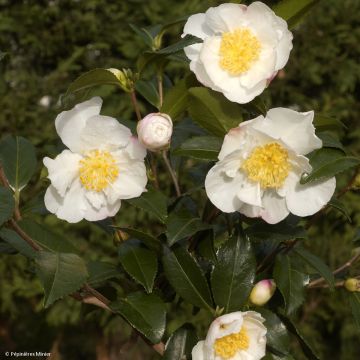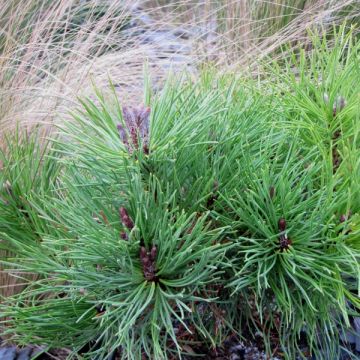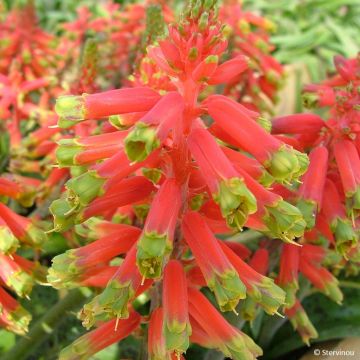

Pieris japonica Pink passion - Japanese Andromeda
Pieris japonica Pink passion - Japanese Andromeda
Pieris japonica Pink passion ® (‘Opstal 69’PBR)
Japanese Andromeda, Japanese Pieris, Lily-of-the-Valley Bush
Special offer!
Receive a €20 voucher for any order over €90 (excluding delivery costs, credit notes, and plastic-free options)!
1- Add your favorite plants to your cart.
2- Once you have reached €90, confirm your order (you can even choose the delivery date!).
3- As soon as your order is shipped, you will receive an email containing your voucher code, valid for 3 months (90 days).
Your voucher is unique and can only be used once, for any order with a minimum value of €20, excluding delivery costs.
Can be combined with other current offers, non-divisible and non-refundable.
Home or relay delivery (depending on size and destination)
Schedule delivery date,
and select date in basket
This plant carries a 24 months recovery warranty
More information
We guarantee the quality of our plants for a full growing cycle, and will replace at our expense any plant that fails to recover under normal climatic and planting conditions.
Would this plant suit my garden?
Set up your Plantfit profile →
Description
The Japanese Andromeda or Pieris japonica 'Pink Passion', following the wonderful cultivar 'Passion', is a recently obtained variety from the Netherlands, awarded in 2013. It is part of a series of sturdy and bushy shrubs with abundant flowering in early spring. Easy to grow in any acidic and moist soil, this vigorous variety displays beautiful flowering in upright clusters of delicate pink bells, and an evergreen foliage of elegant bright green. Stunning in a large pot on the terrace or in a shrub border, always in partial shade.
Pieris belong to the Ericaceae family, like heathers and rhododendrons. They are evergreen shrubs for acidic soil whose new shoots take on pink or coppery tones, accompanied by beautiful flowering in clusters of often fragrant small bells. Very easy when the conditions are met, they appreciate a light, moist and acidic soil, in a partially shaded site - or sunny as long as it is not scorching sun. The varieties derived from Pieris japonica are quite hardy once established.
The 'Pink Passion' variety of Japanese Andromeda has a fairly compact form with a slightly upright bushy habit, reaching about 1.20m (4 ft) in height and 1m (3 ft) in spread at maturity. Its small lanceolate leaves are quite dark green and glossy on their upper surface. They follow tender green spring shoots. The pale pink blooms washed with purple, slightly fragrant and composed of rather upright clusters filled with a multitude of small bells, are preceded by very decorative pink buds in winter. Flowering takes place from March to April.
Slow-growing, 'Pink Passion' does not require pruning, demands very little maintenance, and will be perfect for small gardens whether in pots and containers, rockeries, or as a border plant. A superb and essential evergreen shrub for acidic soil, with the same charm as heathers without their slightly austere appearance once flowering is over, it will naturally and elegantly blend with Rhododendrons and deciduous Azaleas, surrounded by a border of hellebores, ferns and Pernettya.
Pieris japonica Pink passion - Japanese Andromeda in pictures
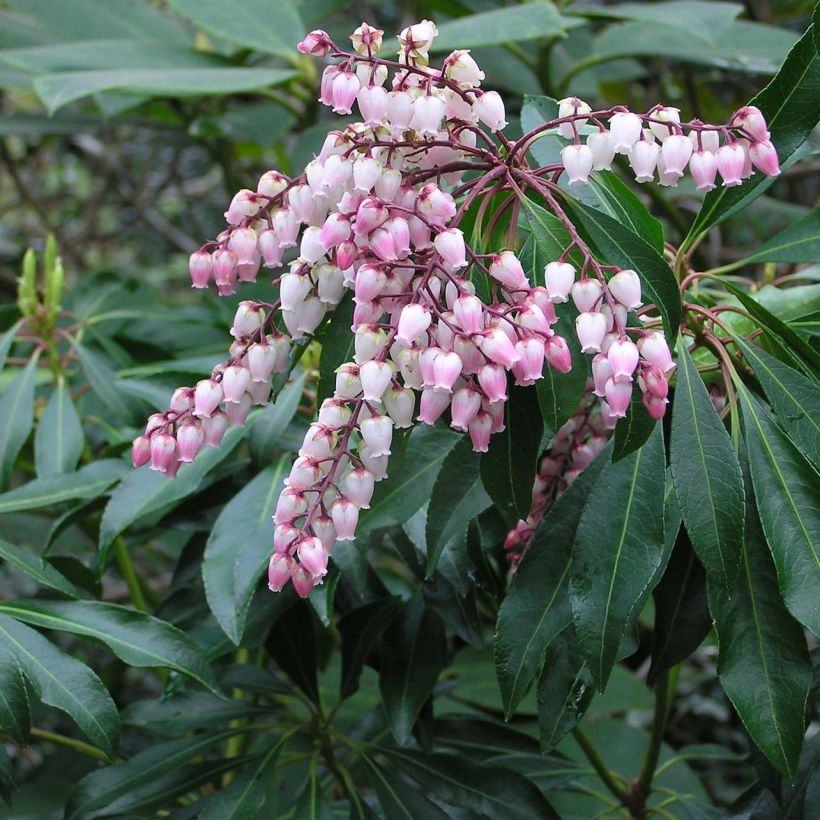



Plant habit
Flowering
Foliage
Botanical data
Pieris
japonica
Pink passion ® (‘Opstal 69’PBR)
Ericaceae
Japanese Andromeda, Japanese Pieris, Lily-of-the-Valley Bush
Cultivar or hybrid
Other Pieris
View all →Planting and care
Pieris japonica plants grow in acidic, but rather fertile and moist soil. You can add ericaceous compost at planting if your soil is neutral, as this will also help to lighten it. They require exposure to non-scorching (morning) sunlight or partial shade, and protection from cold drafts. They prefer soil that remains moist but well-drained. A good mulch (such as pine bark) can help maintain soil acidity and moisture in summer. If you have heavy and/or chalky soil, cultivate your 'Pink Passion' Japanese Andromeda in a container and preferably water it with non-calcareous water. Otherwise, it is a low-maintenance plant that rarely gets sick and should only be pruned when absolutely necessary.
Planting period
Intended location
Care
Planting & care advice
This item has not been reviewed yet - be the first to leave a review about it.
Similar products
Haven't found what you were looking for?
Hardiness is the lowest winter temperature a plant can endure without suffering serious damage or even dying. However, hardiness is affected by location (a sheltered area, such as a patio), protection (winter cover) and soil type (hardiness is improved by well-drained soil).

Photo Sharing Terms & Conditions
In order to encourage gardeners to interact and share their experiences, Promesse de fleurs offers various media enabling content to be uploaded onto its Site - in particular via the ‘Photo sharing’ module.
The User agrees to refrain from:
- Posting any content that is illegal, prejudicial, insulting, racist, inciteful to hatred, revisionist, contrary to public decency, that infringes on privacy or on the privacy rights of third parties, in particular the publicity rights of persons and goods, intellectual property rights, or the right to privacy.
- Submitting content on behalf of a third party;
- Impersonate the identity of a third party and/or publish any personal information about a third party;
In general, the User undertakes to refrain from any unethical behaviour.
All Content (in particular text, comments, files, images, photos, videos, creative works, etc.), which may be subject to property or intellectual property rights, image or other private rights, shall remain the property of the User, subject to the limited rights granted by the terms of the licence granted by Promesse de fleurs as stated below. Users are at liberty to publish or not to publish such Content on the Site, notably via the ‘Photo Sharing’ facility, and accept that this Content shall be made public and freely accessible, notably on the Internet.
Users further acknowledge, undertake to have ,and guarantee that they hold all necessary rights and permissions to publish such material on the Site, in particular with regard to the legislation in force pertaining to any privacy, property, intellectual property, image, or contractual rights, or rights of any other nature. By publishing such Content on the Site, Users acknowledge accepting full liability as publishers of the Content within the meaning of the law, and grant Promesse de fleurs, free of charge, an inclusive, worldwide licence for the said Content for the entire duration of its publication, including all reproduction, representation, up/downloading, displaying, performing, transmission, and storage rights.
Users also grant permission for their name to be linked to the Content and accept that this link may not always be made available.
By engaging in posting material, Users consent to their Content becoming automatically accessible on the Internet, in particular on other sites and/or blogs and/or web pages of the Promesse de fleurs site, including in particular social pages and the Promesse de fleurs catalogue.
Users may secure the removal of entrusted content free of charge by issuing a simple request via our contact form.
The flowering period indicated on our website applies to countries and regions located in USDA zone 8 (France, the United Kingdom, Ireland, the Netherlands, etc.)
It will vary according to where you live:
- In zones 9 to 10 (Italy, Spain, Greece, etc.), flowering will occur about 2 to 4 weeks earlier.
- In zones 6 to 7 (Germany, Poland, Slovenia, and lower mountainous regions), flowering will be delayed by 2 to 3 weeks.
- In zone 5 (Central Europe, Scandinavia), blooming will be delayed by 3 to 5 weeks.
In temperate climates, pruning of spring-flowering shrubs (forsythia, spireas, etc.) should be done just after flowering.
Pruning of summer-flowering shrubs (Indian Lilac, Perovskia, etc.) can be done in winter or spring.
In cold regions as well as with frost-sensitive plants, avoid pruning too early when severe frosts may still occur.
The planting period indicated on our website applies to countries and regions located in USDA zone 8 (France, United Kingdom, Ireland, Netherlands).
It will vary according to where you live:
- In Mediterranean zones (Marseille, Madrid, Milan, etc.), autumn and winter are the best planting periods.
- In continental zones (Strasbourg, Munich, Vienna, etc.), delay planting by 2 to 3 weeks in spring and bring it forward by 2 to 4 weeks in autumn.
- In mountainous regions (the Alps, Pyrenees, Carpathians, etc.), it is best to plant in late spring (May-June) or late summer (August-September).
The harvesting period indicated on our website applies to countries and regions in USDA zone 8 (France, England, Ireland, the Netherlands).
In colder areas (Scandinavia, Poland, Austria...) fruit and vegetable harvests are likely to be delayed by 3-4 weeks.
In warmer areas (Italy, Spain, Greece, etc.), harvesting will probably take place earlier, depending on weather conditions.
The sowing periods indicated on our website apply to countries and regions within USDA Zone 8 (France, UK, Ireland, Netherlands).
In colder areas (Scandinavia, Poland, Austria...), delay any outdoor sowing by 3-4 weeks, or sow under glass.
In warmer climes (Italy, Spain, Greece, etc.), bring outdoor sowing forward by a few weeks.

































